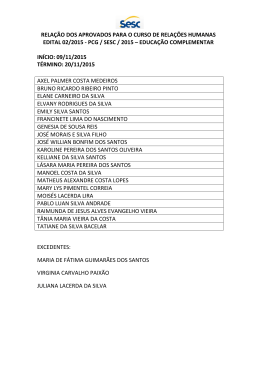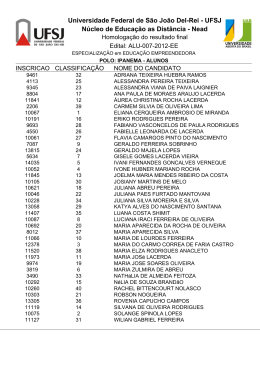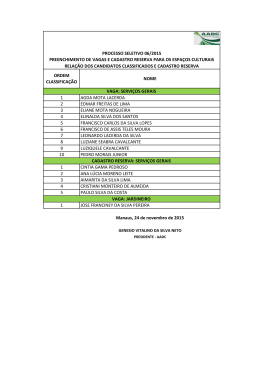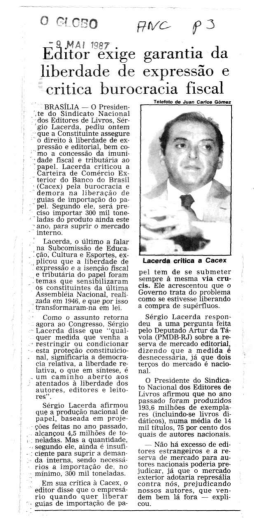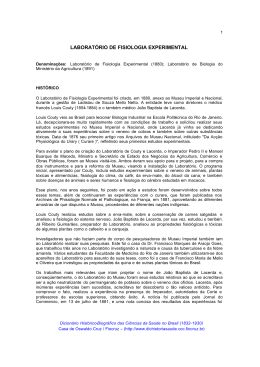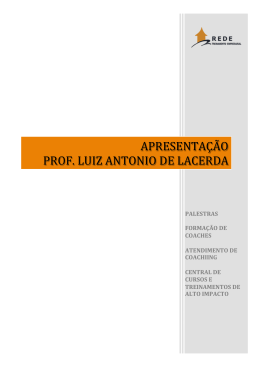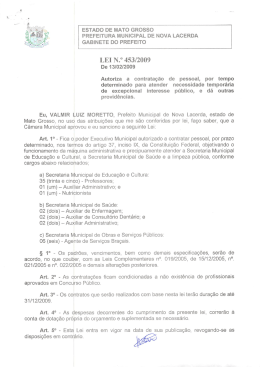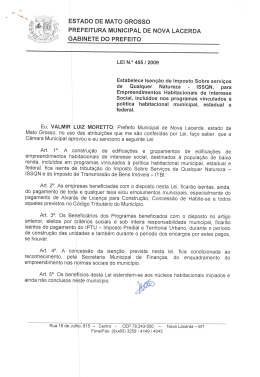MEDICINA E CIÊNCIAS SOCIAIS NO BRASIL: O CASO DE JOÃO BATISTA DE LACERDA Medicine and social sciences in Brazil: the case of João Batista de Lacerda Moema de Rezende Vergara1 RESUMO João Batista de Lacerda desempenhou um papel importante na história da ciência no Brasil. Médico, foi colaborador de várias academias nacionais e internacionais; escreveu em periódicos científicos e para o público leigo e participou de congressos científicos realizados em várias partes do globo. No Museu Nacional, Lacerda iniciou seus trabalhos em antropologia, estudando os crânios encontrados no Largo do Paço, os sambaquis, e os índios botocudos, mas dedicou grande parte de sua carreira ao estudo da composição do curare, à pesquisa do contraveneno das cobras e desenvolveu a ‘vacina anticarbunculosa’ para o gado. Em 1895 Lacerda foi nomeado por Prudente de Morais, Diretor do Museu Nacional, cargo que ocupou até sua morte em 6 de agosto de 1915. No entanto, atualmente ele é conhecido pelos cientistas sociais principalmente por seu trabalho sobre o branqueamento da população brasileira, apresentado em congresso internacional em 1911, e o restante de sua produção científica parece ter caído no ostracismo. O objetivo deste trabalho é fazer uma aproximação dos vários aspectos das atividades profissionais de João Batista de Lacerda, integrando o antropólogo com o cientista de laboratório. PALAVRAS-CHAVE História da Medicina, biografia, ciências sociais ABSTRACT João Batista de Lacerda played a major role in the history of science in Brazil. As a physician, he collaborated in several national and international scientific academies. He wrote in scientific journals as well as to the lay public, and participated in scientific congresses throughout the world. Lacerda initiated his work in anthropology, in the Museu Nacional (Rio de Janeiro), by developing studies on fossil cranes found at Largo do Paço and on the sambaquis, and also by studying the botocudo Indians. The greater part of his career however was dedicated to the researches for obtaining an antidote to snake poison and a vaccine against cattle carbuncle, as well as to the study of the composition of curare. In 1895, the President of the Republic promoted Lacerda to the position of director of the Museu Nacional, in which he remained until his death at August 6, 1915. Nowadays, however, he is best known to social scientists for his work on the “whitening” process (branqueamento) of the Brazilian population, presented in an international congress in 1911, while the rest of his scientific production seems to have 1 Pesquisadora Adjunta do Museu de Astronomia e Ciências Afins – MAST/MCT - e-mail: [email protected] CADERNOS SAÚDE COLETIVA, RIO DE J A N E I R O , 13 (2): 511 - 526, 2005 – 511 MOEMA DE REZENDE VERGARA waned into oblivion. The purpose of this work is to rejoin both aspects of his professional activity, by integrating the anthropologist and the laboratory scientist. KEY WORDS History of Medicine, biography, social sciences 512 – CADERNOS SAÚDE COLETIVA, RIO DE J A N E I R O , 13 (2): 511 - 526, 2005
Download
